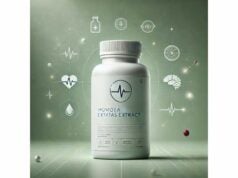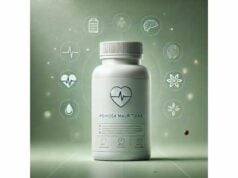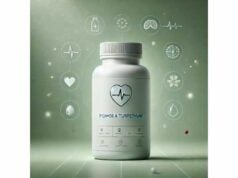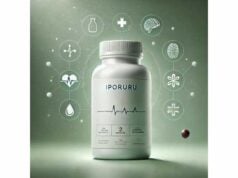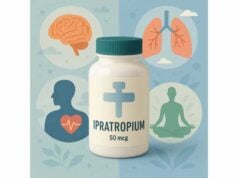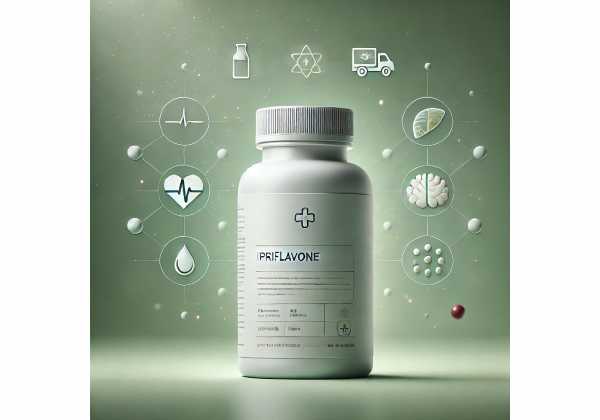
Ipriflavone is a synthetic derivative of naturally occurring isoflavones designed to support bone health. It was widely studied for postmenopausal osteoporosis beginning in the 1990s, often alongside calcium and vitamin D. While early trials reported modest gains in bone mineral density (BMD), a large, well-controlled study later found no protection against bone loss—and flagged a measurable drop in lymphocyte counts in some users. Today, ipriflavone remains available as a supplement in some regions, but clinicians disagree about its value compared with proven therapies. This guide explains what ipriflavone is, how it might work, where the evidence stands, practical dosing used in studies, who may benefit (or should avoid it), and how to combine it with lifestyle strategies that have the strongest impact on fracture risk.
Key Insights
- Primary aim is bone support; evidence shows mixed effects on BMD and no clear fracture reduction.
- Study dosing most often 600 mg/day (200 mg three times daily) with calcium ± vitamin D for 12–36 months.
- Safety caveat: a subset of users developed lymphocytopenia in long trials; periodic blood counts are prudent.
- Avoid use during pregnancy, with milk-protein allergy to certain combination products, or when taking drugs sensitive to CYP interactions (e.g., theophylline, warfarin) without medical oversight.
Table of Contents
- What is ipriflavone and does it work?
- Benefits and limitations in practice
- How to use it, step by step
- Dosage and stacking with calcium and vitamin D
- Side effects, interactions, and who should avoid
- Evidence snapshot: what studies show
What is ipriflavone and does it work?
Ipriflavone (7-isopropoxyisoflavone) is a laboratory-made compound modeled on plant isoflavones. Unlike dietary soy extracts, ipriflavone was formulated to deliver a precise, milligram-level dose that could be studied like a drug. It does not act as estrogen; rather, it appears to influence bone remodeling through non-hormonal pathways.
Proposed mechanisms (plain-English version)
- Resorption restraint: Osteoclasts are the cells that remove old bone. Ipriflavone may dampen osteoclast activity and signaling, leading to less breakdown.
- Formation support: It may indirectly help osteoblasts (bone builders) keep pace, modestly improving the balance between breakdown and formation.
- Calcium economy: Some studies suggest it aids dietary calcium utilization and reduces urinary calcium loss when combined with supplemental calcium.
What “works” means here
- The goals in osteoporosis are fewer fractures and stronger bones. Bone mineral density (BMD) is a surrogate marker; fracture outcomes matter most.
- Early ipriflavone trials reported small BMD gains (especially at forearm or spine). A later, larger trial found no prevention of bone loss compared with calcium alone and noted lymphocyte count reductions in a notable minority.
- Modern standards now favor therapies with demonstrated fracture risk reduction. That puts ipriflavone in the “adjunct or alternative” category rather than front-line care.
Where ipriflavone shows up
- As a standalone 200 mg tablet or capsule.
- In combination products with calcium and vitamin D.
- In some countries as an over-the-counter nutraceutical; in others, it is uncommon or unavailable.
Bottom line
Ipriflavone is a non-hormonal bone-support compound with mixed clinical results. If considered at all, it should sit behind proven measures—adequate calcium and vitamin D intake, weight-bearing exercise, fall-risk reduction, and, when indicated, prescription therapies with fracture data.
Benefits and limitations in practice
Potential benefits (contextualized)
- Small BMD effects in select settings: Earlier, smaller randomized trials in postmenopausal women reported modest BMD improvements at the spine or distal radius over 12–24 months when ipriflavone (600 mg/day) was paired with calcium (typically 500–1000 mg/day).
- Bone turnover moderation: Biochemical markers of bone resorption sometimes declined—consistent with a gentle anti-resorptive action.
Important limitations
- No consistent protection against bone loss: A pivotal multicenter, long-duration trial (3 years, with follow-up) failed to show superiority over calcium for maintaining BMD at spine, hip, or forearm.
- No proven fracture reduction: Across controlled studies, fracture outcomes have not shown a clear benefit attributable to ipriflavone.
- Safety signal—lymphocytes: A proportion of participants developed lymphocytopenia (reduced lymphocyte counts). Most cases were asymptomatic and resolved after discontinuation, but the signal was large enough to influence clinical attitudes toward long-term use.
Who might still consider it?
- Postmenopausal adults unable to use standard options (e.g., intolerance or contraindications) and who accept the tradeoffs after informed discussion.
- Individuals focused on BMD surrogate gains who are already optimized on nutrition, vitamin D status, protein intake, and exercise—and who agree to monitoring.
Realistic expectations
- Any benefit is likely to be modest and slow to accrue, especially compared with agents that have robust fracture data.
- Measurable changes in BMD typically require 12–24 months of consistent dosing, and even then, changes may be within the margin of measurement error if baseline BMD is near-normal.
- If you begin ipriflavone while vitamin D is low, protein intake is inadequate, or resistance training is absent, you are unlikely to see meaningful results.
Better foundational levers
- Calcium intake in the range your clinician recommends (commonly 1000–1200 mg/day from diet plus supplements if needed).
- Vitamin D sufficiency (often targeted 25-OH-D of 30–50 ng/mL, individualized).
- Progressive resistance and impact training suited to your fitness and fracture risk.
- Fall prevention: vision checks, home hazard reduction, balance training.
Take-home
Ipriflavone is at best a supporting actor in bone care. Consider it only after foundational steps are in place and after weighing the safety signal and the mixed efficacy record.
How to use it, step by step
1) Establish your baseline
- Confirm a DXA scan timeframe with your clinician so that any intervention can be assessed (typically every 1–2 years).
- Review medications, fracture history, and fall risk; align on primary goals (e.g., stabilize spine BMD, improve femoral neck).
2) Optimize fundamentals first
- Dietary calcium from food is preferred; top up with a supplement only if dietary intake falls short.
- Vitamin D: correct deficiency before considering add-ons.
- Protein: aim for a daily intake aligned with your health status (many older adults benefit from 1.0–1.2 g/kg/day, individualized).
- Exercise: include resistance training and impact (or power) work tailored by a professional if you have osteoporosis or prior fractures.
3) If you and your clinician still wish to trial ipriflavone
- Select a product with clear dose per capsule and third-party testing.
- Agree on trial duration (often 6–12 months minimum) and objective checkpoints (BMD schedule, bone turnover markers if used, symptom tracking).
4) Build a monitoring plan
- Complete blood count (CBC) at baseline and periodically (e.g., at 3 months and then every 6–12 months) to watch lymphocytes.
- Medication review for potential drug interactions (see interaction section).
- Adverse effects diary: note GI upset, dizziness, infections, or unusual fatigue.
5) Decide whether to continue
- If BMD is stable or improved and blood counts are normal—and you tolerate the regimen—you may consider continuing through your agreed horizon.
- If BMD declines despite adherence and the basics are optimized, re-evaluate priorities and alternatives.
Everyday tips
- Take doses with meals to ease the stomach.
- Keep daily habits consistent; avoid skipping calcium or vitamin D while expecting ipriflavone to carry the load.
- Reassess need annually—especially if your therapy landscape changes.
Dosage and stacking with calcium and vitamin D
Doses used in controlled studies
- Standard dose: 600 mg/day, given as 200 mg three times daily.
- Common companion nutrients: Calcium 500–1000 mg/day (total intake, diet plus supplements) and vitamin D in amounts needed to achieve sufficiency.
Timing and administration
- Split dosing (morning, midday, evening) is conventional in the literature.
- Take with food to minimize GI discomfort.
“Stacking” principles
- Calcium pairing: Most study designs coupled ipriflavone with calcium; taking ipriflavone without adequate calcium undermines the rationale.
- Vitamin D sufficiency: If vitamin D is low, bone remodeling remains unfavorable—even with ipriflavone on board.
- Other bone-active supplements: Be cautious combining with multiple anti-resorptive botanicals (e.g., high-dose phytoestrogens) without guidance, as overlapping effects and interactions complicate monitoring.
How long to try
- BMD changes are slow; if you trial ipriflavone, commit to at least 12 months with periodic lab checks.
- If CBC changes (notably lymphocyte count drops) appear, pause and discuss with your clinician; many reported cases normalized after discontinuation.
Special populations
- Kidney stones or hypercalciuria: Coordinate calcium amounts carefully.
- GI sensitivity: Start with food; some users tolerate calcium citrate better than carbonate.
- Polypharmacy: Because ipriflavone can influence drug-metabolizing enzymes, review your full medication list before starting.
Practical example
- A postmenopausal adult with low spine BMD but no fractures, adequate dietary calcium (~800 mg/day), and vitamin D at 34 ng/mL might take: calcium 300–400 mg/day (supplement) to reach target intake, vitamin D as prescribed, and ipriflavone 200 mg with breakfast, lunch, and dinner for 12 months—if agreed upon after counseling and with CBC monitoring at 3 and 12 months.
Side effects, interactions, and who should avoid
Common tolerability profile
- GI symptoms (nausea, stomach discomfort, loose stools) are the most frequent complaints and are typically mild.
- Headache or dizziness occurs in a minority and often improves with food or dose timing.
Important safety signal—lymphocyte counts
- Long-duration trials reported a notable incidence of lymphocytopenia in ipriflavone groups. Most cases were asymptomatic and reversed after stopping, but the finding warrants planned CBC monitoring during extended use.
Drug–drug interaction considerations
- Theophylline and related xanthines: Ipriflavone has been shown to reduce theophylline metabolism, potentially increasing levels and adverse effects; avoid co-use or monitor closely.
- Warfarin and other narrow-therapeutic-index agents: Enzyme effects (notably on CYP systems) may alter drug exposure; if used together, intensive INR or drug-level monitoring is essential and often a reason to steer clear.
- Polypharmacy caution: If you take multiple medications metabolized by CYP1A2, CYP2C9, or CYP3A4, medical oversight is prudent before adding ipriflavone.
Who should not use ipriflavone
- Pregnancy or trying to conceive: Insufficient safety data.
- History of significant cytopenias or immune compromise: risk–benefit typically unfavorable.
- Uncontrolled chronic infections or frequent infections: avoid until fully evaluated.
- Known hypersensitivity to product components.
When to stop and seek advice
- Unexplained fevers, frequent infections, or unusual fatigue (possible low white blood cells).
- Easy bruising or bleeding if combined with anticoagulants.
- Persistent GI symptoms despite food and dose adjustments.
Risk–mitigation checklist
- Agree on baseline labs and follow-up CBCs.
- Review all prescription and OTC drugs, including caffeine/theophylline-like products.
- Ensure calcium and vitamin D are optimized so you are not “testing” ipriflavone in a suboptimal context.
- Reassess annually whether continued use adds value relative to alternatives with stronger fracture data.
Evidence snapshot: what studies show
Early randomized trials (1990s)
- Multiple controlled studies in postmenopausal women using 600 mg/day ipriflavone plus calcium reported small BMD improvements, particularly at the distal radius or lumbar spine over 12–24 months. Bone turnover markers often shifted in a favorable direction.
Pivotal multicenter trial (2001)
- A large, 3-year, randomized, double-blind, placebo-controlled study comparing ipriflavone (200 mg three times daily) plus calcium versus calcium alone found no significant advantage for preserving BMD at spine, hip, or forearm.
- The trial also documented a clinically relevant rate of lymphocytopenia among ipriflavone users, most cases resolving after discontinuation.
Recent pooled analyses
- Modern systematic reviews and meta-analyses that include early trials often conclude that ipriflavone can increase BMD modestly and lower resorption markers; however, results remain heterogeneous, and fracture reduction is not established.
- Safety summaries emphasize gastrointestinal symptoms and the lymphocyte signal as the primary concerns in extended use.
Reconciling the mixed picture
- Differences in study size, populations, calcium/vitamin D background, and measurement sites explain much of the inconsistency. Smaller trials are more likely to register small effects; larger, rigorous designs have not confirmed a durable benefit over calcium alone.
- Given limited resources and the importance of fracture outcomes, most experts prioritize therapies with strong, consistent evidence.
Where ipriflavone fits now
- Consider only after lifestyle foundations and nutrient status are optimized, and preferably when standard pharmacologic options are unsuitable or declined.
- If used, adopt a monitor-and-decide approach with objective follow-up rather than indefinite continuation.
References
- Ipriflavone in the treatment of postmenopausal osteoporosis: a randomized controlled trial 2001 (RCT)
- The efficacy and safety of ipriflavone in postmenopausal women with osteopenia or osteoporosis: A systematic review and meta-analysis 2020 (Systematic Review)
- A double blind, placebo-controlled trial of ipriflavone for prevention of postmenopausal spinal bone loss 1997 (RCT)
- Ipriflavone as an inhibitor of human cytochrome P450 enzymes 1998 (Mechanistic Study)
- Interaction of theophylline and ipriflavone at the level of cytochrome P450 system 1995 (Mechanistic Study)
Medical Disclaimer
This article is educational and does not replace personalized medical advice. Decisions about osteoporosis treatment should be made with a qualified clinician who knows your history, fracture risk, medications, and lab results. Do not start or stop prescription medicines because of a supplement. If you choose to trial ipriflavone, arrange periodic blood counts and review potential drug interactions. Seek medical care promptly for fever, frequent infections, unusual bleeding, or new/worsening symptoms.
If you found this useful, please consider sharing it on Facebook, X (formerly Twitter), or your preferred platform, and follow us for more practical, evidence-informed guides. Your support helps us continue producing high-quality content.

